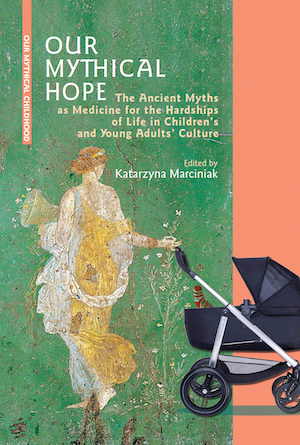Mythical Delight and Hope in C.S. Lewis's "Till We Have Faces" and "Chronicles of Narnia"
Mythical Delight and Hope in C.S. Lewis's "Till We Have Faces" and "Chronicles of Narnia"
Author(s): Simon J.G. Burton, Marylin E. Burton
Subject(s): Pre-WW I & WW I (1900 -1919), Interwar Period (1920 - 1939), WW II and following years (1940 - 1949), Post-War period (1950 - 1989), Transformation Period (1990 - 2010)
Published by: Wydawnictwa Uniwersytetu Warszawskiego
Keywords: Cupid; Psyche; C.S. Lewis; Till We Have Faces; Chronicles of Narnia; myth; Christianity; innocence; childhood; adulthood
Summary/Abstract: C.S. Lewis’ acclaimed 1956 work "Till We Have Faces: A Myth Retold" was his final novel. While not his favourite of his own works – that honour went to "Perelandra" – it was the one he considered his most mature and accomplished. "Till We Have Faces" presents a powerful retelling of the myth of Cupid and Psyche. One of its principal themes is that of innocent delight in the divine and the disastrous consequence of renouncing that childlike state in the name of a false, and ultimately cynical, maturity. Significantly, the work was published in the same year as Lewis’ "The Last Battle" and it clearly resonates with major themes in that book as well as in the "Chronicles of Narnia" more broadly. In particular, the story of Susan’s tragic journey from childlike wonder to adult cynicism inverts disturbingly the conversion narrative of Orual, Psyche’s jealous sister, without closing the door on the possibility of redemption. More positively, the simple delight that Psyche shows in Cupid finds many echoes in the "Chronicles", above all in the joyful, romping reunion with Aslan in "The Lion, the Witch and the Wardrobe" and the heaven sequence of the "Last Battle". For Lewis, Christianity was to be understood as the “True Myth” echoed and anticipated in all the other myths of the world. Drawing principally on "Till We Have Faces" and the "Chronicles of Narnia", this paper explores the way in which Lewis uses the vehicle of myth on multiple levels to engage adults and children in the fundamental questions of life.
Book: Our Mythical Hope
- Page Range: 179-189
- Page Count: 11
- Publication Year: 2021
- Language: English
- Content File-PDF

